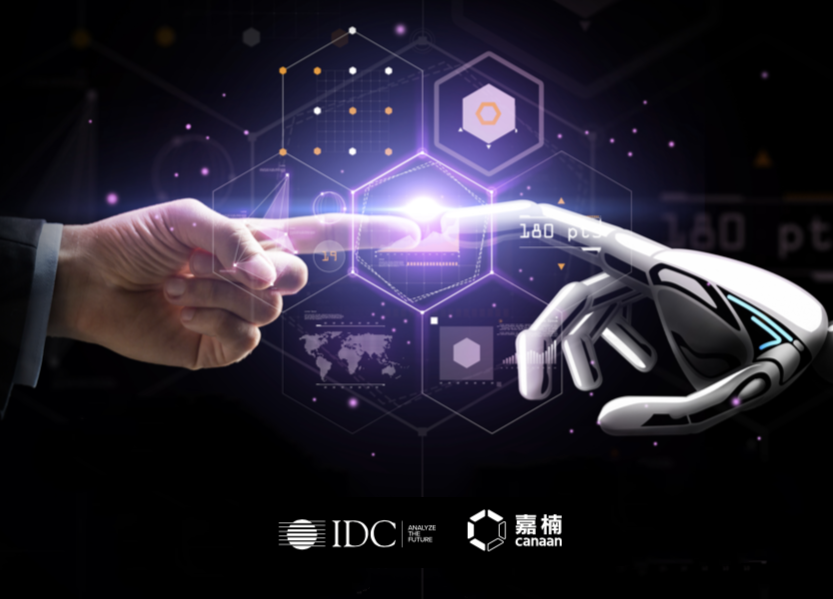In this new technological revolution, China and the world have finally stood on the same starting line.

In the past 21st century, AI has become one of the most noticeable technologies in the scientific and technological field. Taking the birth of AlphaGo in 2016 as a watershed, with the promotion of deep learning, AI has made rapid progress in the application of algorithms, not only accelerating the intelligent upgrade of traditional industries, but also spawning new species and new formats such as autonomous driving and robotics. .
The beginning of the new decade, AI is entering the stage of large-scale implementation of scenes and commercialization, and has become a key part of business and social infrastructure. A few days ago, consulting firm IDC and China’s AI chip company Jia Nan released the first AI report of the 2020 generation-“Scenarioized AI, making smart at your fingertips”, showing the beautiful scene of AI’s further sceneization in the 2020 generation.
Entering the 2020 generation, the new generation of technology represented by 5G, the Internet of Things, and the blockchain is also helping AI to continue to upgrade. According to the IDC report, driven by AI, technological innovation is changing from “people use new technologies to create value” to “AI integration of new technologies to create value”, and the “computing power, algorithms, and data” closely related to AI will become Three core elements of intelligent innovation.
Promote AI Scenery landing
The IDC report states that the future landing of AI cannot be separated from the deployment of algorithms and computing power on the edge. In the future, there will still be a large number of areas to achieve AI landing, that is, intelligent upgrade of existing equipment and intelligent innovation of traditional equipment.
Aiming at the transformation and upgrading of existing scenarios, the intelligent upgrade of existing equipment is the first step for AI to achieve the implementation of scenarios.
Take Jia Nan’s smart meter reading practice in Guiyang Huaguoyuan Community as an example. This community is known as the “Asia’s largest community” with a total planned area of 10 square kilometers, a total construction area of 18.3 million square meters, and 430,000 occupants. Population is the largest shanty town reconstruction project in the country.
For a community of this size, reading and counting hydrometers is a big problem. The total number of various residential and commercial buildings in the Huaguoyuan community is close to 300, and most of them are high-rise buildings. The meter reading of water and electricity meters is huge and time-consuming. Manual meter reading is also prone to errors. Intelligent transformation is imminent.
Install smart water meters once and for allTo solve these problems, the replacement of smart hydrometers takes a long time and costs, and the water and power outages caused during the replacement will also affect residents’ lives. In the end, the solution of the Huaguoyuan community is to install intelligent meter reading components for hydropower meters, and replace artificially to implement traditional meter reading work with artificial intelligence.

(Intelligent meter reading component based on Jianan Kanzhi K210)
This smart meter reading module integrates a computing platform and image acquisition equipment based on Kanan Kanzhi K210 chip. It can regularly take pictures of hydrometer dials and perform local AI image recognition on the pictures to analyze the hydropower in the pictures. Measure the number and combine with the historical reading to verify, correct the error, and finally upload the data to the meter reading platform.
Unlike traditional AI terminals, the smart meter reading component of the Huaguoyuan community deploys computing power on the edge side, which can complete image recognition locally without uploading photos to the cloud. Therefore, the entire system can only transmit the degree information of the hydrometer, and the data transmission cost is controlled at a very low level.
With the help of AI, the meter reading cycle of the Huaguoyuan community has been shortened from half a month in the artificial era to several hours now. On this basis, the timeliness of meter reading data in the Huaguoyuan community has also been greatly improved, and local water companies and power companies can also use this to more accurately predict hydropower demand and plan water supply more efficiently. In addition, compared to a fully retrofitted smart hydrometer, the smart meter reading component saves 75% on hardware costs.
Besides the flower orchard community, the cases of Canaan’s AI scenes continue to emerge, and are active in the fields of smart home, smart energy consumption, smart parks and smart agriculture. Replacing traditional devices with new-generation smart devices is another big market for AI scenes.
Take the AI sensorless access control system of Beijing Zhongguancun iSoftStone’s smart headquarters as an example. The traditional access control system senses users through door cards and fingerprints. In the face recognition era, most access control systems require users to point at the camera and upload face information to the cloud for recognition detection. This method not only has a slow recognition speed but also easily leads to privacy leaks.
But at iSoftStone’s headquarters, a new generation of sensorless access control system based on Kanan Kanzhi K210 computing platform can realize long-distance face recognition to achieve a sensorless entrance experience. In addition, the computing power of this system is deployed on the edge side, and face recognition is done locally without data transmission, so the recognition speed is extremely fast, and corporate privacy can be protected.

(Sensorless access control system based on Kanan Kanzhi K210)
At present, this AI sensorless access control system has more than 30 monitoring points. Each monitoring point has passed the passer identification more than 2,000 times a day, and the detection time has been reduced from the traditional 2 seconds to less than 1 second.
In these cases, the K210 chip has become the source of computing power for the entire AI system. The K210 is based on the RISC-V open source architecture and was unveiled in September 2018. It was developed by Chinese local company Jianan Technology. Compared with traditional chips, the K210 guarantees computing power performance (1 Tops) while controlling power consumption to a lower level of 0.3W. In addition, K210 also supports visual and auditory dual-modal recognition, which is suitable for various fields such as smart home, smart energy consumption, smart retail and smart parks.
In addition to K210, Jia Nan also plans to launch the second-generation AI chip K510 in the first quarter of this year. K510 uses the upgraded RISC-V multi-core heterogeneous processor architecture, which greatly improves the original KPU architecture (knowledge processing unit, an artificial neural network accelerator independently developed by Canaan). In addition, the K510 is also optimized for the 5G communication environment, equipped with multiple high-definition, depth camera interfaces, and is mainly targeted at smart retail, ADAS assisted driving, and financial fields.
On the basis of the chip, Jia Nan also developed its own AI SaaS platform to provide end customers with one-stop artificial intelligence services that integrate hardware, algorithms and software. Around AI, Jia Nan is building a complete ecosystem from chips to services.
New AI opportunities in China
In the next decade starting in 2020, where are the new opportunities for AI?
IDC believes that with the promotion of 5G, Internet of Things, blockchain and other technologies, more devices will be equipped with AI in the future to achieve data interoperability and intelligent linkage. This will further expand the application scenarios of AI, especially the application scenarios of edge-side AI.
At the same time, the massive amount of data brought about by the AI scene will also provide continuous data resource support for the future development of AI, and eventually push AI to usher in a new explosion.
IDC pointed out in the report that data has become a new production factor alongside “labor, capital, land, knowledge, technology, management”. As the cornerstone of AI strategy, data will become a measure of as small as an enterprise, as large as a city or even a country.